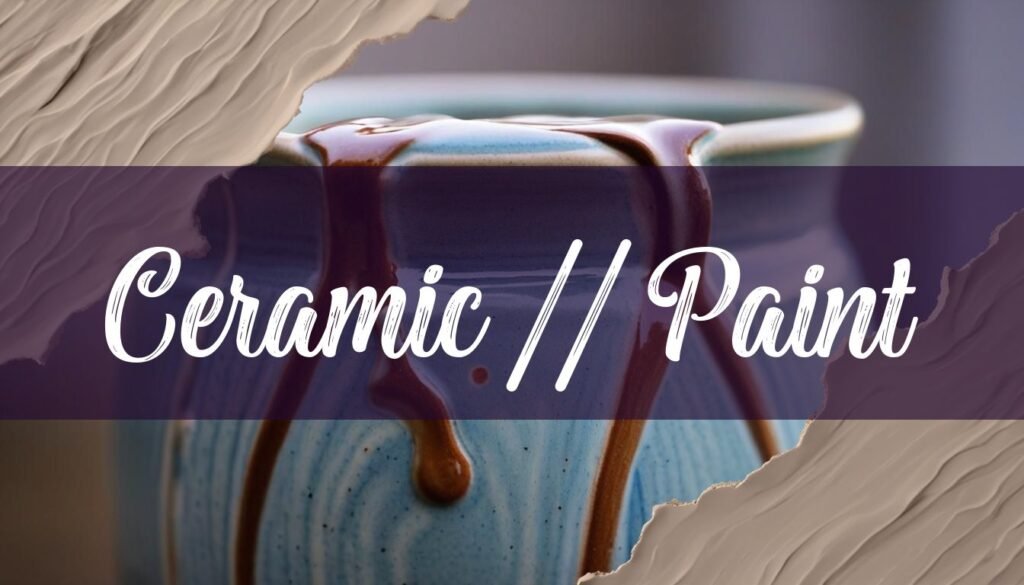Finding the perfect ceramic items to paint can be an exciting first step into a world of creativity and personalized art. Whether you’re a seasoned artist or a beginner looking to explore a new hobby, knowing where to source these blanks is essential. This article will walk you through various options, from local stores to online marketplaces, offering insights into the pros, cons, and key considerations for each. By understanding these factors, you can confidently choose the best source for your ceramic painting needs, ensuring a rewarding and enjoyable artistic experience.
Where to Buy Ceramic Items to Paint
Local craft stores are often the first place people consider when looking for ceramic items to paint. These stores typically offer a curated selection of bisque (unglazed ceramic ware that has been fired once), paints, and brushes. The advantage of shopping at a local craft store is the ability to see and touch the items before purchasing, assessing their quality and suitability for your project. You can also get immediate advice from staff members, which can be invaluable for beginners. However, local craft stores may have a limited selection and potentially higher prices compared to online options.
Online marketplaces like Etsy and Amazon provide a vast array of ceramic items to paint, often at competitive prices. Etsy is particularly known for unique, handmade items, offering a chance to support independent artists and find one-of-a-kind pieces. Amazon, on the other hand, boasts a wide selection from various suppliers, including bulk options. When shopping online, carefully review product descriptions, customer reviews, and seller ratings to ensure quality and reliability. Pay attention to the type of clay used, the dimensions of the item, and whether it’s suitable for the type of paint you plan to use. While online shopping offers convenience and variety, it lacks the tactile experience of inspecting items in person. (Amazon link) For those looking to start their pottery journey, understanding how to get started with pottery can be incredibly helpful.
Specialty ceramic suppliers cater specifically to pottery and ceramic enthusiasts, providing a wide range of bisque items, tools, and supplies. These suppliers often offer higher-quality ceramics and a more extensive selection than general craft stores. They may also provide technical information and support, helping you choose the right items for your project. While specialty suppliers might have higher prices, the investment can be worthwhile for serious ceramic artists seeking superior materials.
Thrift stores and estate sales can be a treasure trove for unique and affordable ceramic items to paint. You might find vintage pieces or unusual shapes that aren’t available elsewhere. However, items from thrift stores may require thorough cleaning and preparation before painting. Be sure to inspect the items carefully for cracks, chips, or other damage that could affect the final result.
Tips for Selecting Ceramic Items for Painting
When selecting ceramic items for painting, consider the type of clay used. Bisque is a common choice because it’s porous and readily accepts paint. Also, think about the surface texture. A smooth surface is ideal for detailed designs, while a textured surface can add depth and visual interest. Also consider the item’s shape complexity – simpler shapes are generally easier to paint, especially for beginners, while more intricate designs may require advanced techniques. You may also want to check out this guide on what type of clay is used for ceramics.
The type of paint you plan to use is a critical factor. Acrylic paints are versatile and work well on unglazed pottery. They’re easy to use, non-toxic, and dry quickly. However, they may not be as durable on glazed surfaces. Porcelain paints are designed specifically for glazed ceramics and can be baked in an oven to create a durable, waterproof finish. (Porcelain paint link) Enamel paints are oil-based and offer excellent durability and a glossy finish (Enamel paint link), making them suitable for both glazed and unglazed ceramics. Latex paints are water-based and require multiple coats for a solid finish, but they dry quickly and come in various gloss options (Latex paint link). Spray paint is another viable option that works on both glazed and unglazed pieces, providing a smooth, brush-stroke-free finish (Spray paint link).
Preparing Your Ceramic Item for Painting
Proper preparation is crucial for ensuring optimal paint adhesion and a professional finish. Start by cleaning the ceramic item thoroughly with water and a mild cleaner to remove any dirt, dust, or grease (Cleaning ceramics link). For glazed surfaces, sanding lightly with steel wool or fine-grit sandpaper can help create microabrasions that improve paint adhesion (Sanding ceramics link). Be sure to wipe away any sanding dust with a damp cloth. Applying a primer is recommended, especially for glossy surfaces (Priming ceramics link). Use a bonding primer specifically designed for ceramics and apply it in thin, even coats. Allow each coat to dry completely before applying the next. If the primer dries with a gritty texture, lightly sand it with steel wool to create a smooth surface for painting. (Sanding primer link) For air-hardening clay, ensure it is fully dried and sealed with a clay varnish or acrylic gloss medium to prevent moisture absorption (Air-hardening clay link).
Essential Tools and Supplies
To embark on your ceramic painting journey, gather the necessary tools and supplies. Brushes in various sizes and shapes are essential for applying paint and creating different effects (Brushes link). Sponges can be used for blending, creating textures, and cleaning up spills. A palette or paint tray is helpful for organizing your paints. Stencils and masking tape can assist in creating precise designs and patterns. Sealants, such as clear acrylic sprays or varnishes, protect the finished artwork and enhance its durability. Other useful tools include water containers for cleaning brushes, paper towels for wiping spills, and aprons to protect your clothing. For detailed work, consider using paint pens with fine tips (Paint pens link).
Common Mistakes to Avoid
Several common mistakes can hinder your ceramic painting success. Applying paint too thickly can lead to drips, uneven drying, and a less professional finish (Thick paint link). Always apply paint in thin, even layers, allowing each layer to dry completely before applying the next. Insufficient drying time can cause the paint to smudge or peel. Be patient and allow adequate drying time between coats and before applying a sealant. Using incompatible materials, such as acrylic paint on a heavily glazed surface without proper preparation, can result in poor adhesion and a disappointing outcome (Incompatible materials link). Always choose the right type of paint for the ceramic surface and follow the manufacturer’s instructions for preparation and application. Additionally, avoid picking up bone-dry or bisque-fired items by their handles to prevent breakage (Picking up bone dry link).





